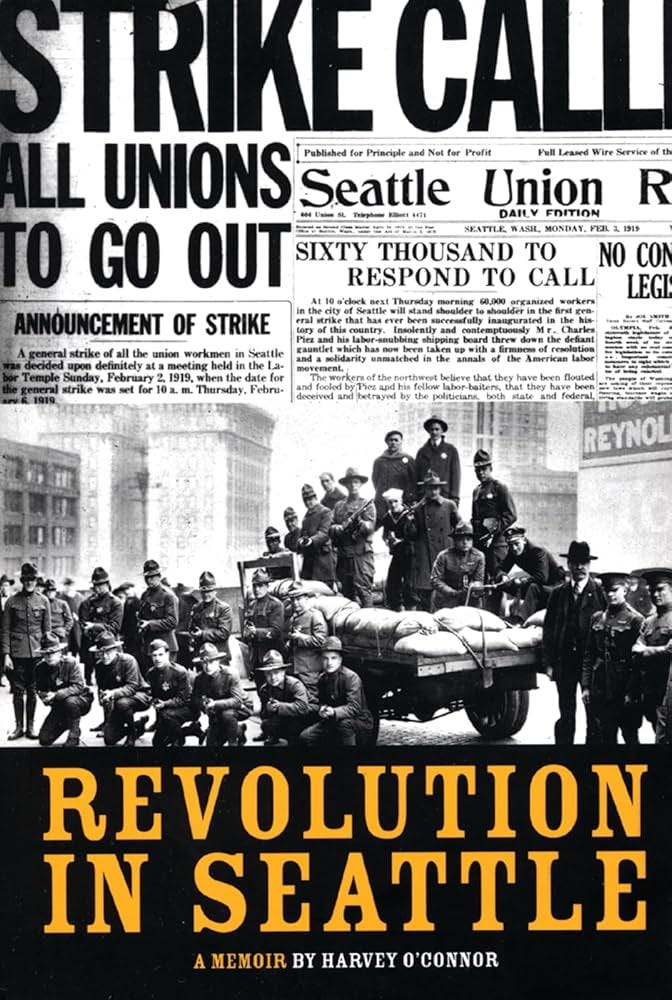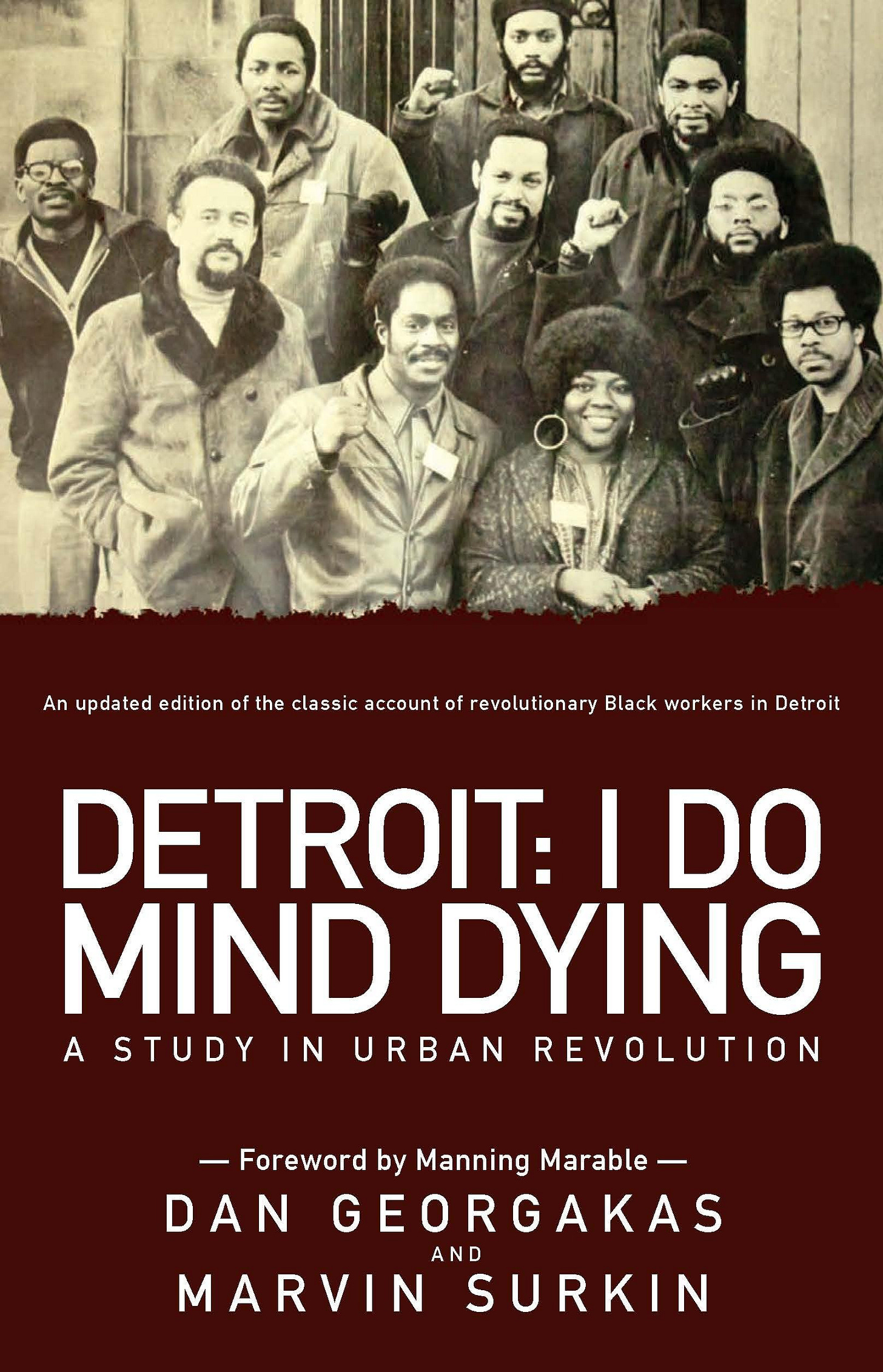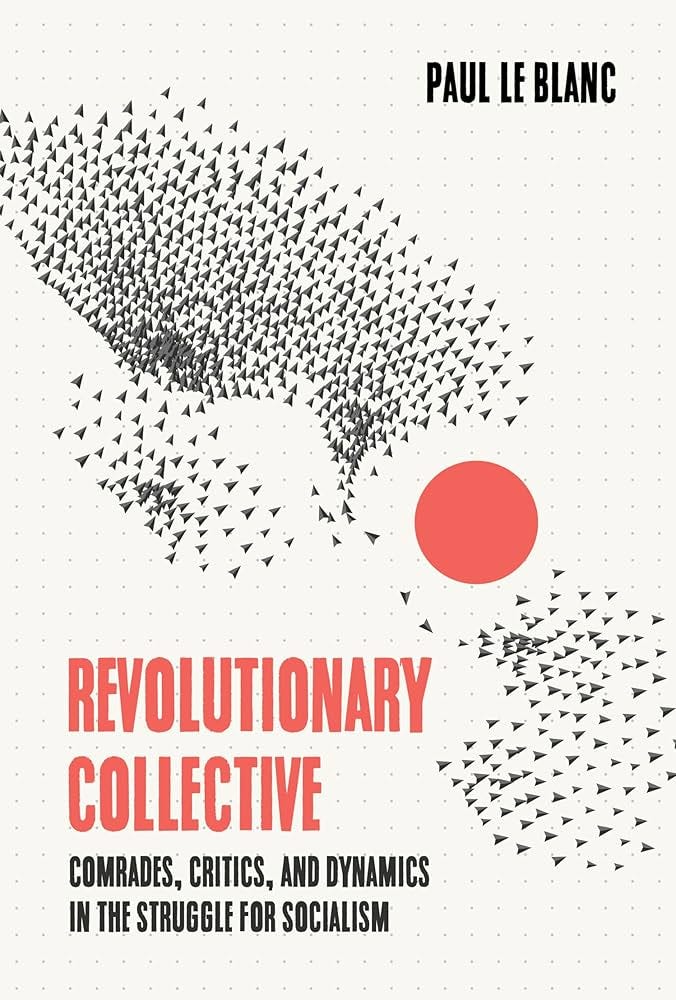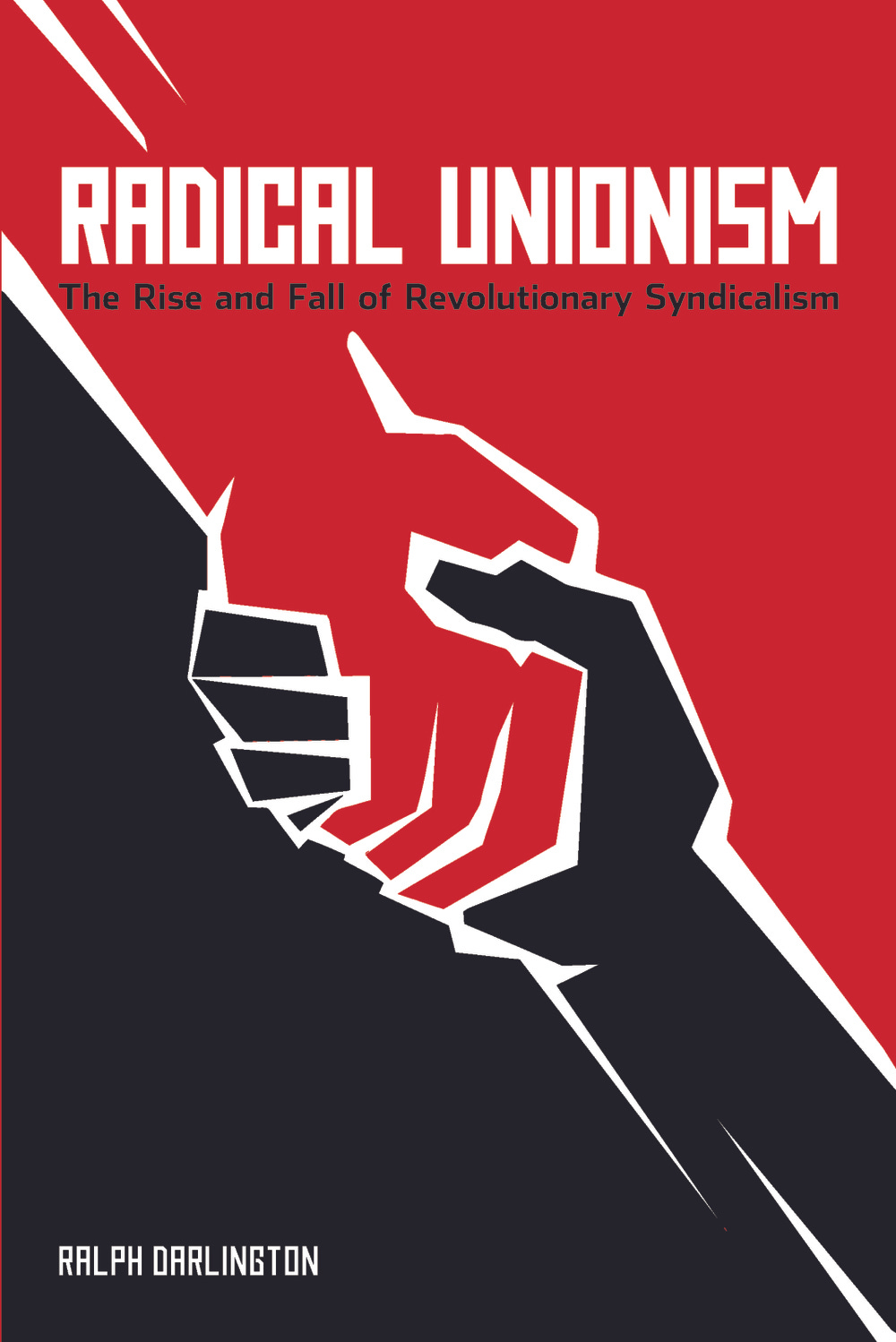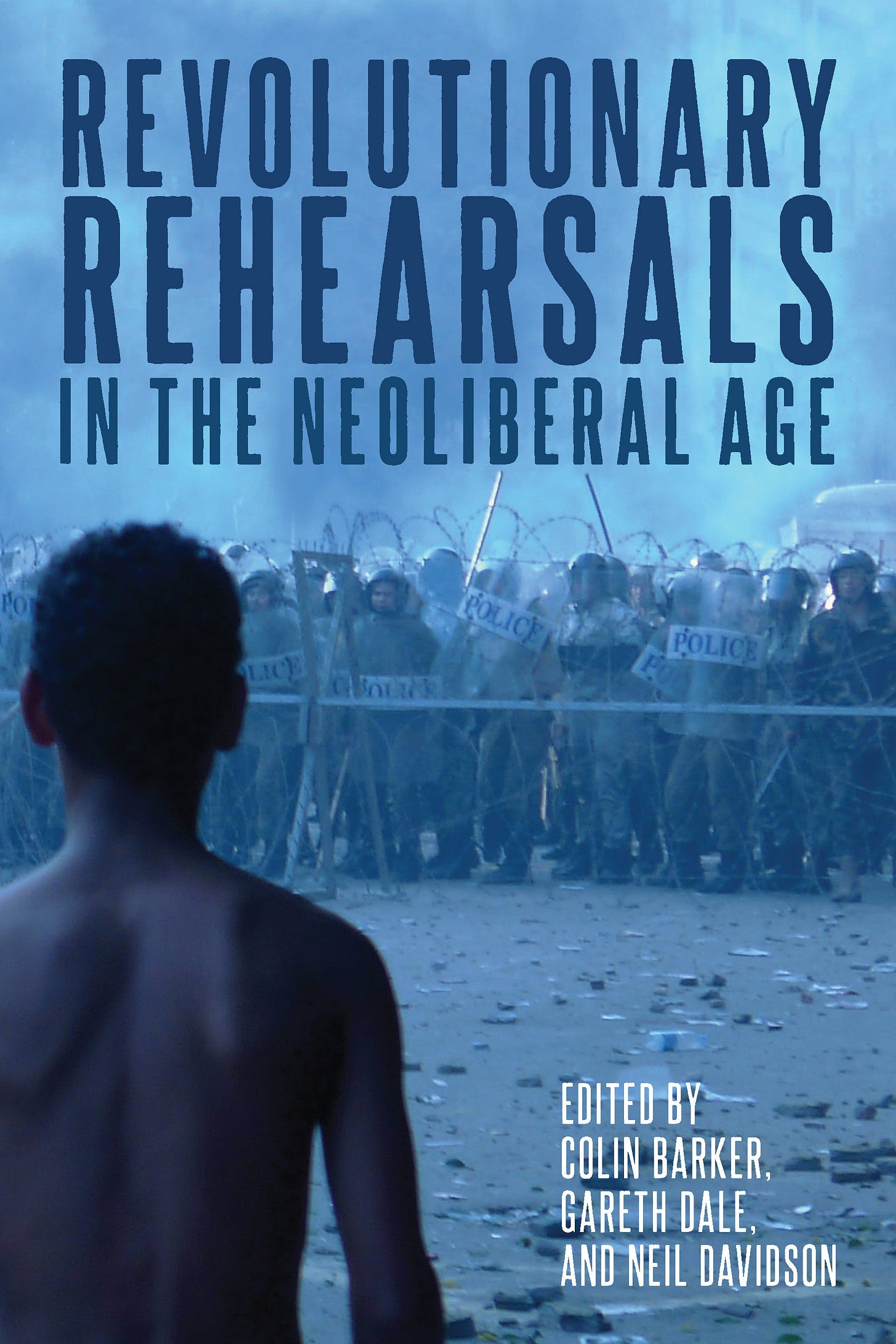What We Must Do is Not Unprecedented
Oligarchs have owned and controlled our government before... But people kept fighting. They organized. They built power.
From J. P. Hill, Douglas J. Harding:
Read history. Oligarchs have owned and controlled our government before. They attacked oppressed groups, went after migrants, and enacted mass violence against workers. But people kept fighting. They organized. They built power. What we need to do is not unprecedented.
Thunder in the Mountains: The West Virginia Mine War, 1920-21
By Lon Savage
The West Virginia Mine War of 1920-21, a major civil insurrection of unusual brutality on both sides, even by the standards of the coal fields, involved thousands of union and nonunion miners, state and private police, militia, and federal troops. Before it was over, three West Virginia counties were in open rebellion, much of the state was under military rule, and bombers of the U.S. Army Air Corps had been dispatched against striking miners.
The origins of this civil war were in the Draconian rule of the coal companies over the fiercely proud miners of Appalachia. It began in the small railroad town of Matewan when Mayor C. C. Testerman and Police Chief Sid Hatfield sided with striking miners against agents of the Baldwin-Felts Detective Agency, who attempted to evict the miners from company-owned housing. During a street battle, Mayor Testerman, seven Baldwin-Felts agents, and two miners were shot to death.
Hatfield became a folk hero to Appalachia. But he, like Testerman, was to be a martyr. The next summer, Baldwin-Felts agents assassinated him and his best friend, Ed Chambers, as their wives watched, on the steps of the courthouse in Welch, accelerating the miners’ rebellion into open warfare.
Much neglected in historical accounts, Thunder in the Mountains was the first available book-length account of the crisis in American industrial relations and governance that occurred during the West Virginia Mine Wars.
The Battle of Blair Mountain: The Story of America’s Largest Labor Uprising
By Robert Shogun
The Battle of Blair Mountain covers a profoundly significant but long-neglected slice of American history - the largest armed uprising on American soil since the Civil War. In 1921, some 10,000 West Virginia coal miners, outraged over years of brutality and lawless exploitation, picked up their Winchesters and marched against their tormentors, the powerful mine owners who ruled their corrupt state. For ten days the miners fought a pitched battle against an opposing legion of deputies, state police, and makeshift militia. Only the intervention of a federal expeditionary force, spearheaded by a bomber squadron commanded by General Billy Mitchell, ended this undeclared civil war and forced the miners to throw down their arms. The significance of this episode reaches beyond the annals of labor history. Indeed, it is a saga of the conflicting political, economic and cultural forces that shaped the power structure of 20th century America.
Fight Like Hell: The Untold History of American Labor
By Kim Kelly
A revelatory and inclusive history of the American labor movement, from independent journalist and Teen Vogue labor columnist Kim Kelly.
Freed Black women organizing for protection in the Reconstruction-era South. Jewish immigrant garment workers braving deadly conditions for a sliver of independence. Asian American fieldworkers rejecting government-sanctioned indentured servitude across the Pacific. Incarcerated workers advocating for basic human rights and fair wages. The queer Black labor leader who helped orchestrate America’s civil rights movement. These are only some of the working-class heroes who propelled American labor’s relentless push for fairness and equal protection under the law.
The names and faces of countless silenced, misrepresented, or forgotten leaders have been erased by time as a privileged few decide which stories get cut from the final copy: those of women, people of color, LGBTQIA people, disabled people, sex workers, prisoners, and the poor. In this assiduously researched work of journalism, Teen Vogue columnist and independent labor reporter Kim Kelly excavates that history and shows how the rights the American worker has today—the forty-hour workweek, workplace-safety standards, restrictions on child labor, protection from harassment and discrimination on the job—were earned with literal blood, sweat, and tears.
Fight Like Hell comes at a time of economic reckoning in America. From Amazon’s warehouses to Starbucks cafes, Appalachian coal mines to the sex workers of Portland’s Stripper Strike, interest in organized labor is at a fever pitch not seen since the early 1960s.
Inspirational, intersectional, and full of crucial lessons from the past, Fight Like Hell shows what is possible when the working class demands the dignity it has always deserved.
When Miners March
By William C. Blizzard, edited by Wess Harris
In the first half of the 20th century, strikes and Union battles, murders and frame-ups, were common in every industrial center in the U.S. But none of these episodes compared in scope to the West Virginia Mine Wars.
The uprisings of coal miners that defined the Mine Wars of the 1920’s were a direct result of the Draconian rule of the coal companies. The climax was the Battle of Blair Mountain, the largest open and armed rebellion in U.S. history. The Battle, and Union leader Bill Blizzard’s quest for justice, was only quelled when the U.S. Army brought guns, poison gas and aerial bombers to stop the 10,000 bandanna-clad miners who formed the spontaneous “Red Neck Army.”
Over half a century ago, William C. Blizzard wrote the definitive insider’s history of the Mine Wars and the resulting trial for treason of his father, the fearless leader of the Red Neck Army. Events dramatized in John Sayles film Matewan, and fictionalized in Denise Giardina’s stirring novel Storming Heaven, are here recounted as they occurred. This is a people’s history, complete with previously unpublished family photos and documents. If it brawls a little, and brags a little, and is angry more than a little, well, the people in this book were that way.
The Road to Blair Mountain: Saving a Mine Wars Battlefield from King Coal
By Charles B. Keeney
In 1921 Blair Mountain in southern West Virginia was the site of the country’s bloodiest armed insurrection since the Civil War, a battle pitting miners led by Frank Keeney against agents of the coal barons intent on quashing organized labor. It was the largest labor uprising in US history. Ninety years later, the site became embroiled in a second struggle, as activists came together to fight the coal industry, state government, and the military- industrial complex in a successful effort to save the battlefield—sometimes dubbed “labor’s Gettysburg”—from destruction by mountaintop removal mining.
The Road to Blair Mountain is the moving and sometimes harrowing story of Charles Keeney’s fight to save this irreplaceable landscape. Beginning in 2011, Keeney—a historian, founding board member of the West Virginia Mine Wars Museum, and great-grandson of Frank Keeney—led a nine-year legal battle to secure the site’s placement on the National Register of Historic Places. His book tells a David-and-Goliath tale worthy of its own place in West Virginia history. A success story for historic preservation and environmentalism, it serves as an example of how rural, grassroots organizations can defeat the fossil fuel industry.
To Live Here, You Have To Fight: How Women Led Appalachian Movements for Social Justice
By Jessica Wilkerson
Launched in 1964, the War on Poverty quickly took aim at the coalfields of southern Appalachia. There, the federal government found unexpected allies among working-class white women devoted to a local tradition of citizen caregiving and seasoned by decades of activism and community service.
Jessica Wilkerson tells their stories within the larger drama of efforts to enact change in the 1960s and 1970s. She shows white Appalachian women acting as leaders and soldiers in a grassroots war on poverty--shaping and sustaining programs, engaging in ideological debates, offering fresh visions of democratic participation, and facing personal political struggles. Their insistence that caregiving was valuable labor clashed with entrenched attitudes and rising criticisms of welfare. Their persistence, meanwhile, brought them into unlikely coalitions with black women, disabled miners, and others to fight for causes that ranged from poor people's rights to community health to unionization.
Inspiring yet sobering, To Live Here, You Have to Fight reveals Appalachian women as the indomitable caregivers of a region--and overlooked actors in the movements that defined their time.
Gun Thugs, Rednecks, and Radicals: A Documentary History of the West Virginia Mine Wars
By David Alan Corbin
Strikes and union battles occurred throughout American industry during the early part of the twentieth century, but none of these stories compare to the West Virginia Mine Wars of 1912 and 1921. These two workers’ rebellions quickly drew national attention to an area known principally for its “black gold,” the coal that was vital for U.S. factories, power plants, and warships of that age.
In 1912, miners struck against the harsh conditions in the work camps of Paint and Cabin Creeks and coal operators responded with force. The ensuing battles caused the West Virginia governor to declare martial law, prompting Samuel Gompers to dub the state “Russianized West Virginia [where] the people can be naught but serfs.”
There was little improvement in working conditions by 1921, when another army—thousands of union miners—went up against similar numbers of state police, local deputies, and paid company guards. The weeklong Battle of Blair Mountain ended only after President Warren Harding sent 2,000 U.S. troops and a small unit of bombers to pacify the region
Gun Thugs, Rednecks, and Radicals tells the story of these union battles as seen by the leaders, rank-and-file participants, and the journalists who came to West Virginia to cover them for papers including The Nation and the New York Times.
Union leaders like Gompers, Frank Keeney, Fred Mooney, Bill Blizzard, and Mother Jones discuss the lives and struggles of the miners for their union. The book also contains articles, speeches, and personal testimony heard by two U.S. Senate committees sent to investigate West Virginia’s labor problems. In this testimony, miners and their family members describe life and work in the coal camps, telling why they participated in these violent episodes in West Virginia history.
Special attention is given to the role of Huntington’s own radical newspaper, The Socialist and Labor Star, a forgotten monument in the history of American heresy and radicalism.
Life Work And Rebellion in the Coal Fields: The Southern West Virginia Miners, 1880-1922
By David A. Corbin
Between 1880 and 1922, the coal fields of southern West Virginia witnessed two bloody and protracted strikes, the formation of two competing unions, and the largest armed conflict in American labor history—a week-long battle between 20,000 coal miners and 5,000 state police, deputy sheriffs, and mine guards. These events resulted in an untold number of deaths, indictments of over 550 coal miners for insurrection and treason, and four declarations of martial law. Corbin argues that these violent events were collective and militant acts of aggression interconnected and conditioned by decades of oppression. His study goes a long way toward breaking down the old stereotypes of Appalachian and coal mining culture.
55 Strong: Inside The West Virginia Teachers' Strike
Edited by Elizabeth Catte, Emily Hilliard, and Jessica Salfia
On February 22, 2018, nearly 20,000 West Virginia teachers, bus drivers, and service personnel walked out on their jobs in solidarity. After thirteen hard days, the workers, largely women, won higher pay and better benefits. Beyond that, the strike sparked a revolution in education across the United States.
What compelled West Virginia's education workers to strike? How did they organize? What were teachers and allies doing during the walk-out? And how was this strike connected to West Virginia’s long history of labor organization and unions?
55 Strong: Inside the West Virginia Teachers' Strike answers these questions and offers unique, on-the-ground insights into this historic labor stoppage. The book includes essays by teachers from around the state, images from the picket lines, organizing documents, and material on the history of the labor movement in West Virginia. Edited by Jessica Salfia, a West Virginia public school teacher, Emily Hilliard, a West Virginia-based folklorist, and Elizabeth Catte, author of What You Are Getting Wrong About Appalachia and Pure America.
A necessary and urgent rallying cry for anyone interested in the future of organized labor in America.
Working Class Radicals: The Socialist Party in West Virginia, 1898–1920
By Dr. Frederick A. Barkey
Working Class Radicals: The Socialist Party in West Virginia, 1898–1920 examines the rise and fall of organized socialism in West Virginia through an exploration of the demographics of membership, oral interview material gathered in the 1960s from party members, and the collapse of the party in the wake of the Paint Creek-Cabin Creek coal-mining strike of 1912.
The first local branch of the West Virginia Socialist Party was established in Wheeling in 1901, and by 1914 several thousand West Virginians were dues-paying members of local branches. By 1910 local Socialists began to elect candidates to office, and in 1912 more than 15,000 West Virginia voters cast their ballots for Socialist presidential candidate Eugene Debs. The progress that West Virginia socialists achieved on the electoral front was a reflection of the party’s strategy of increasing class-consciousness by working with existing unions to build the power of the labor movement. The party appealed to a fairly broad cross section of wage earners, and its steady growth also owed much to the fact that many members of the middle class were attracted to the cause.
Several factors combined to send the party into rapid decline, most importantly deep fissures between class and craft factions of the party and 1915 legislation making third party political participation difficult. Working Class Radicals offers insight into the various internal and external forces that doomed the party and serves as a cautionary tale to contemporary political leaders and organizers.
Class War, USA: Dispatches from Workers’ Struggles in American History
By Brandon Weber
Class War, USA is a rich collection of stories about ordinary people who resisted oppression and exploitation against all odds. Brandon Weber's succinct and vivid essays capture crucial moments of struggle when working-class people built movements of hope and defiance. Evocative imagery, archival photographs, and descriptive text make history come alive in these pages.
From the mines to the factories to the fields, Weber shares the experiences of the real-life men and women who organized, heroically resisted, and battled the bosses and corrupt politicians. In the spirit of A People’s History of the United States, this book conveys engaging and accessible narratives of ordinary people who led labor struggles that have indelibly shaped American history.
Essays include vivid accounts of resistance in the workplace like the Ludlow miner’s strike and organizing at the Triangle Shirtwaist Factory, as well as broader pieces on cultural figures like Woody Guthrie, Black Wall Street in Tulsa, OK, and the fight for the eight-hour day.
An invaluable tool for learning the lessons of grassroots struggle, Class War, USA is the perfect counter-narrative to the myth that change comes only from the top, and will appeal to students of history and labor activists alike.
A Short History of the U.S. Working Class: From Colonial Times to the Twenty-First Century (Revolutionary Studies)
By Paul Le Blanc
Noting that standard accounts of U.S. history often pay little attention to the working class, labor historian Paul Le Blanc presents a colorful, fact-filled history that concentrates on the struggles and achievements of that often-neglected laboring majority. Employing a blend of economic, social, and political history, Le Blanc shows how important labor issues have been and continue to be in the forging of our nation’s history. Within a broad analytical framework he highlights issues of class, gender, race, and ethnicity, and includes the views of key figures of U.S. labor, including Cesar Chavez, Eugene V. Debs, Elizabeth Gurley Flynn, Samuel Gompers, Woody Guthrie, “Big Bill” Haywood, Langston Hughes, Mary “Mother” Jones, Martin Luther King Jr., George Meany, A. Philip Randolph, and Carl Sandburg.
In addition to the main narrative, a bibliographical essay directs readers to classic works and cutting-edge scholarship in the field of U.S. labor history as well as to relevant ¬fiction, poetry, and ¬films for further exploration or study. The book’s substantial glossary offers clear definitions and thought-provoking mini-essays for almost two hundred terms, from the most basic to the most complex and technical.
Revolution in Seattle
By Harvey O'Connor
The Seattle General Strike of 1919 was America’s first citywide labor stoppage, a defiant example of workers’ power in the aftermath of World War I. Told in gripping detail by one of the era’s great labor journalists, Revolution in Seattle captures the dramatic dynamics of workers organizing strike committees to take control of their city from below. Republished on the tenth anniversary of the 1999 “Battle in Seattle” against the World Trade Organization, Harvey O’Connor’s book offers lessons and inspiration to a new generation of rebels.
Working Class History: Everyday Acts Of Resistance & Rebellion
Edited by Working Class History, foreword by Noam Chomsky
History is not made by kings, politicians, or a few rich individuals—it is made by all of us. From the temples of ancient Egypt to spacecraft orbiting Earth, workers and ordinary people everywhere have walked out, sat down, risen up, and fought back against exploitation, discrimination, colonization, and oppression.
In our first book, Working Class History presents a distinct selection of people’s history through hundreds of “on this day in history” anniversaries that are as diverse and international as the working class itself. Women, young people, people of color, workers, migrants, Indigenous peoples, LGBT+ people, disabled people, older people, the unemployed, home workers, and every other part of the working class have organized and taken action that has shaped our world, and improvements in living and working conditions have been won only by years of violent conflict and sacrifice. These everyday acts of resistance and rebellion highlight just some of those who have struggled for a better world and provide lessons and inspiration for those of us fighting in the present. Going day by day, this book paints a picture of how and why the world came to be as it is, how some have tried to change it, and the lengths to which the rich and powerful have gone to maintain and increase their wealth and influence.
This handbook of grassroots movements, curated by the popular Working Class History project, features many hidden histories and untold stories, reinforced with inspiring images, further reading, and a foreword from legendary author and dissident Noam Chomsky.
Poor People's Movements: Why They Succeed, How They Fail
By Frances Fox Piven and Richard A. Cloward
Have the poor fared best by participating in conventional electoral politics or by engaging in mass defiance and disruption? The authors of the classic Regulating The Poor assess the successes and failures of these two strategies as they examine, in this provocative study, four protest movements of lower-class groups in 20th century America:
— The mobilization of the unemployed during the Great Depression that gave rise to the Workers' Alliance of America
— The industrial strikes that resulted in the formation of the CIO
— The Southern Civil Rights Movement
— The movement of welfare recipients led by the National Welfare Rights Organization
Detroit: I Do Mind Dying, A Study in Urban Revolution
By Dan Georgakas and Marvin Surkin
Detroit: I Do Mind Dying tracks the extraordinary development of the Dodge Revolutionary Union Movement and the League of Revolutionary Black Workers as they became two of the landmark political organizations of the 1960s and 1970s. It is widely heralded as one the most important books on the black liberation movement.
Always on Strike: Frank Little and the Western Wobblies
By Arnold Stead
“[The governor] asked me what we would do if the companies did not yield to our demands. I told him we would call everyman out of the mines. Then he said that if we did, that he would place them under Federal control. I laughed and told him we would call out every worker in the country, agriculture workers, lumbermen, munitions workers, miners, mechanics and all classes of working men. He said, ‘Why, man, you wouldn’t do that. This country is at war.’ I said, ‘Governor, I don’t care what country your country is fighting. I am fighting for the solidarity of labor!’” — From the speech for which Frank Little was murdered in Butte, Montana
Frank Little is considered by some to be the greatest organizer produced by the U.S. labor movement, and yet precious little has been written about the famous Industrial Workers of the World (IWW) agitator. Little was a key leader of the country’s first free speech fights, organized a number of mass strikes, and was considered such a threat to corporate interests that he was lynched by company thugs for decry attempts at strike breaking. Police and government officials not only turned a blind eye to his murder, they later used his words and actions to justify a campaign to scapegoat and persecute other members of the IWW.
Always on Strike chronicles and critically engages with Little’s exploits in hopes of exposing a new generation of radicals to his life, legacy and politics.
Revolutionary Collective: Comrades, Critics, and Dynamics in the Struggle for Socialism
By Paul Le Blanc
This book surveys revolutionary socialist ideas and engages a gallery of contentious political thinkers, offering an indispensable assessment of the place of revolutionary collectives in this radical tradition.
Beginning with a broad and informative survey of scholarship on V.I. Lenin and “Leninism,” Le Blanc goes on to explore the multifaceted “collective” qualities of the Russian Bolshevik organization. He then turns his attention to several of its central figures as well as a rich variety of activist-intellectuals who in one way or another continued to engage with Lenin’s perspectives after his death, including Leon Trotsky, Alexander Bogdanov, Georg Lukács, Antonio Gramsci, Rosa Luxemburg, Karl Korsch, and Daniel Bensaïd.
The volume concludes by considering related questions which have more recently posed problems within left-wing organizations, gesturing toward the dynamics and needs of future struggles.
Radical Unionism: The Rise and Fall of Revolutionary Syndicalism
By Ralph Darlington
During the first two decades of the twentieth century the ideas of revolutionary syndicalism developed into a major influence within the trade union movement. Committed to destroying capitalism through direct industrial action and revolutionary trade union struggle, the movement raised fundamental questions for activists across the world.
Radical Unionism provides an analysis of the dynamics and trajectory of the syndicalist movement in six specific countries: France, Spain, Italy, America, Britain and Ireland, and provides a systematic examination of the relationship between syndicalism and communism.
The Labor Wars: From the Molly Maguires to the Sit Downs
By Sidney Lens
The rise of the American labor movement was characterized by bloody and revolutionary battles. From the first famous martyrs, the Molly Maguires in the Pennsylvania coal fields in the nineteenth century, to the crucial workers’ victory of the 1930s in the sit-down strikes against General Motors, it has a history of pitched battles that frequently erupted into open warfare.
This is also the story of the factional wars within the American labor movement itself and of the great leaders it generated: Eugene Debs, Samuel Gompers, William Z. Foster, Bill Haywood, John L. Lewis, Walter Reuther, and many more—some of them Sidney Lens’ personal friends.
There have been no revolutions in the United States since the first one in 1776. The closest America has come to revolution has been the Labor Wars, each one of which has been, in a sense, a revolution-in-microcosm. The strikers in these industrial fl are-ups confronted not only the power of their employers but, ultimately, that of the State . . . and in the process there was always the possibility of a widening and escalating conflict bordering on insurrection.
Revolutionary Rehearsals in the Neoliberal Age
Edited by Colin Barker, Gareth Dale, and Neil Davidson
This ambitious volume examines revolutionary situations during a non-revolutionary historical conjuncture--the neoliberal era. The last three decades have seen an increase in the number of political upheavals that challenge existing power structures, many of them taking the form of urban revolts. This book compellingly explores a series of such upheavals--in Eastern Europe, South Africa, Indonesia, Argentina, Bolivia, Venezuela, sub-Saharan Africa (including Congo, Zimbabwe, Burkina Faso) and Egypt. Each chapter studies the ways in which protest movements developed into insurgent challenges to state power, and the strategies that regimes have deployed to contain and repress revolt.
In addition to empirical chapters, the book engages in theorization of revolution, dealing with questions such as the patterning of revolution in contemporary history, the relationship between class struggle and social movements, and the prospects of socialist revolution in the twenty-first century.




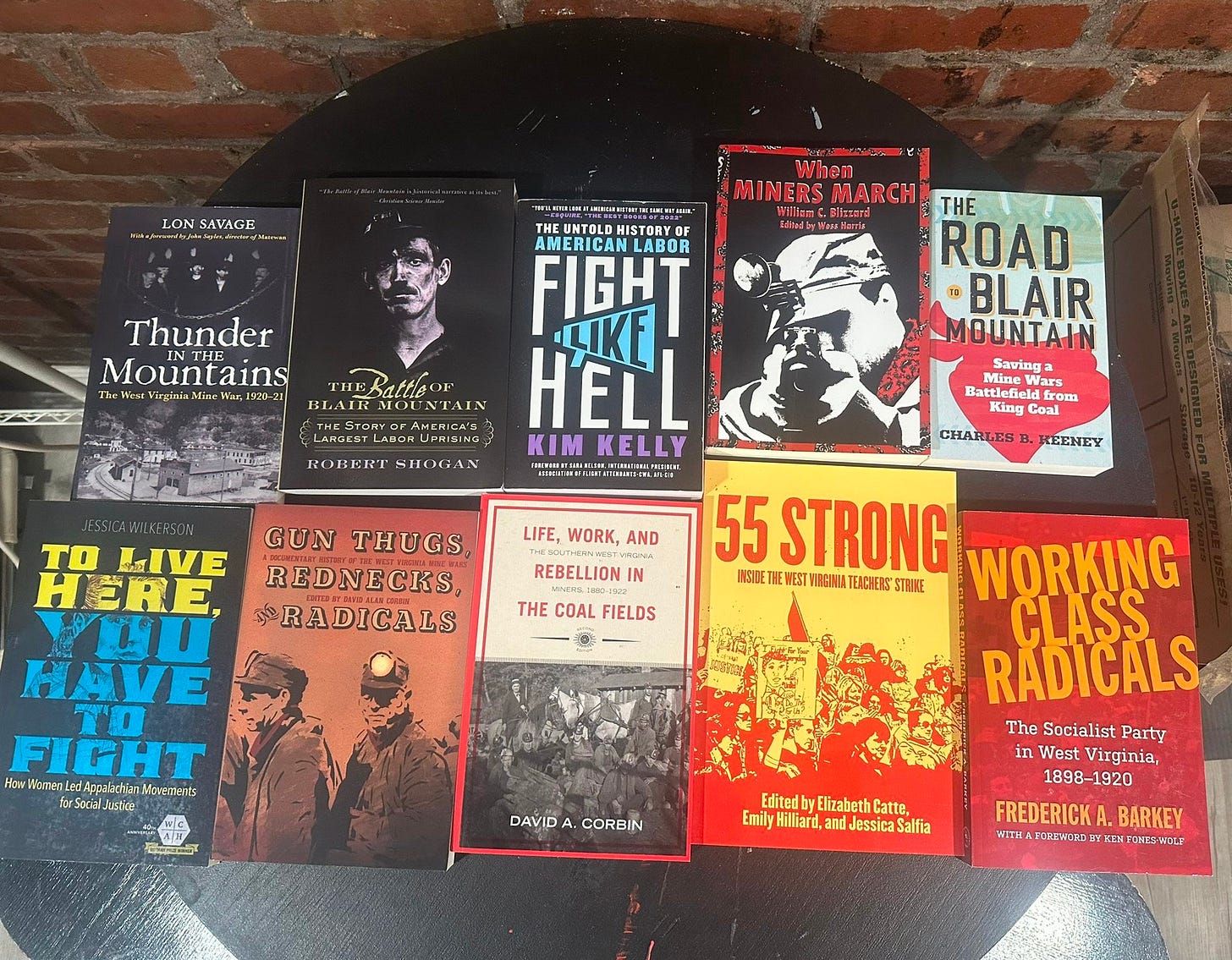


![The Battle of Blair Mountain: The Story of America's Largest Labor Uprising [Book] The Battle of Blair Mountain: The Story of America's Largest Labor Uprising [Book]](https://substackcdn.com/image/fetch/$s_!-aPP!,w_1456,c_limit,f_auto,q_auto:good,fl_progressive:steep/https%3A%2F%2Fsubstack-post-media.s3.amazonaws.com%2Fpublic%2Fimages%2F2c21001c-e04a-4cc9-beda-cabbb9d2f38e_907x1360.jpeg)
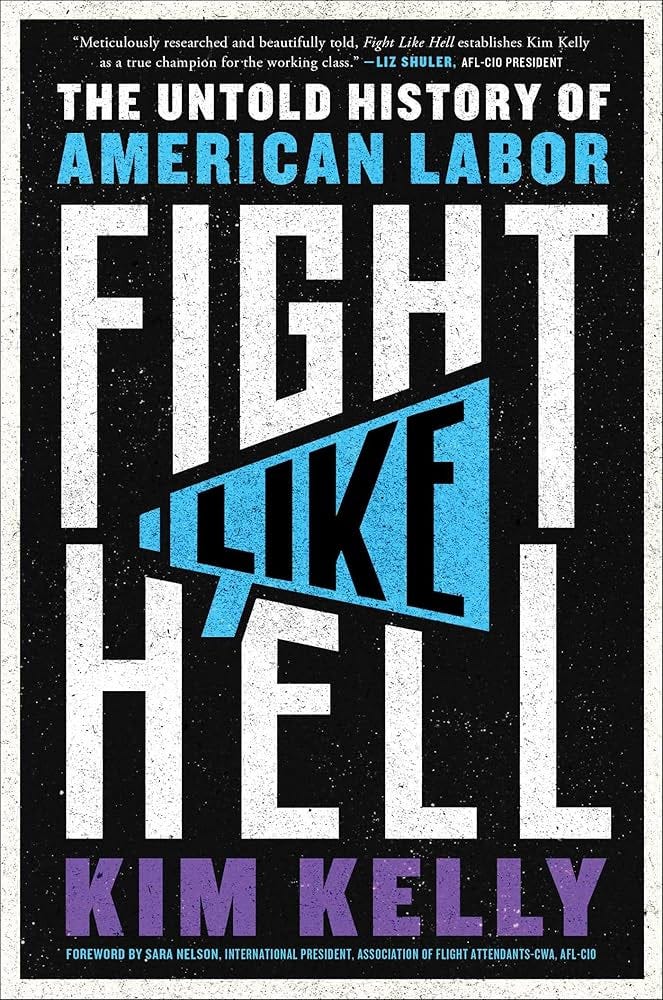

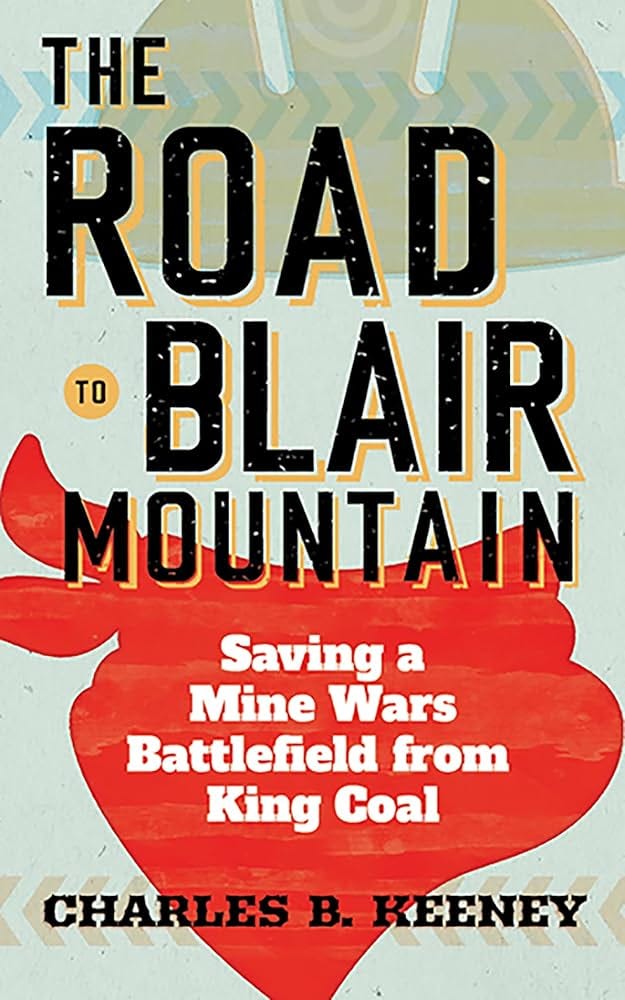
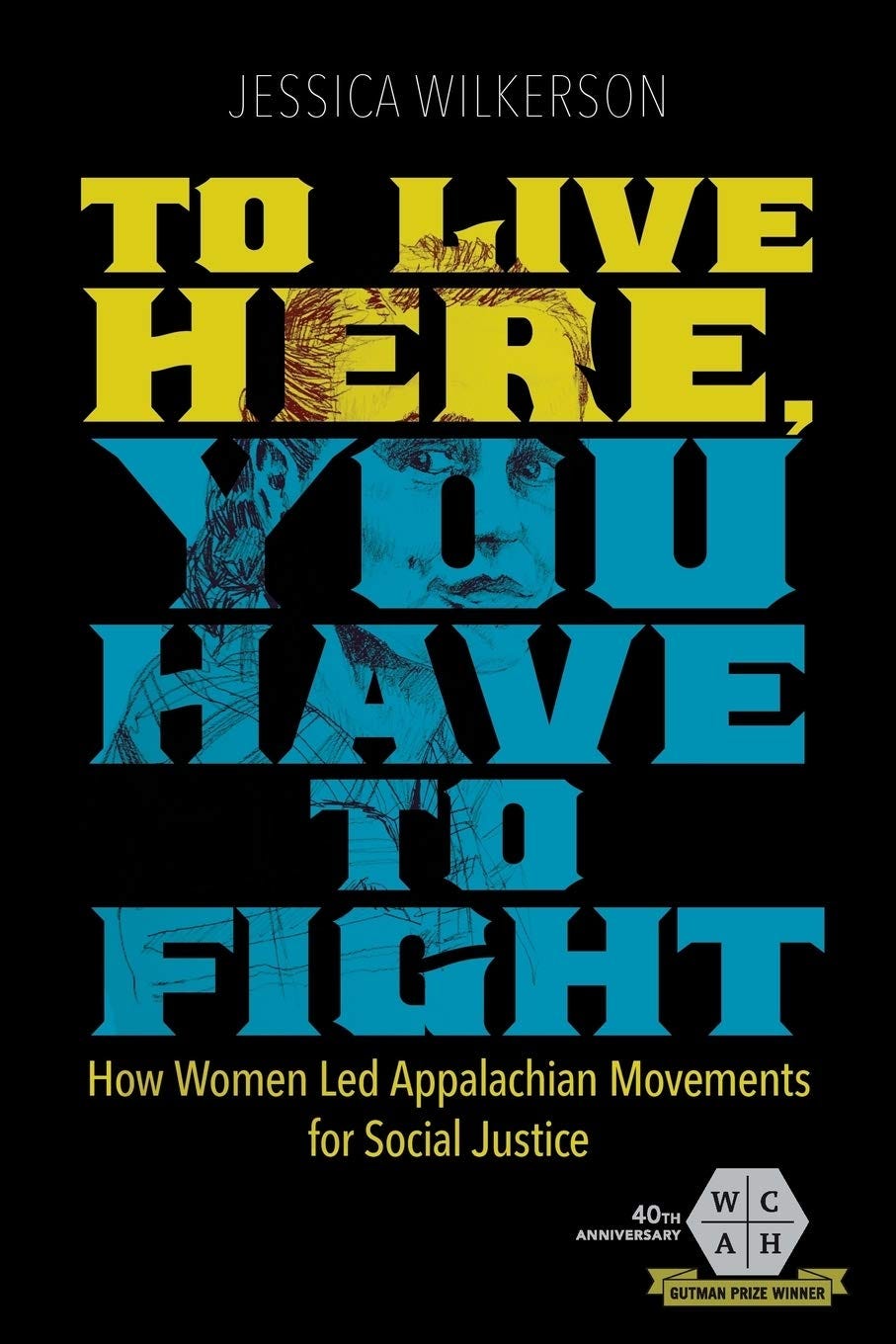
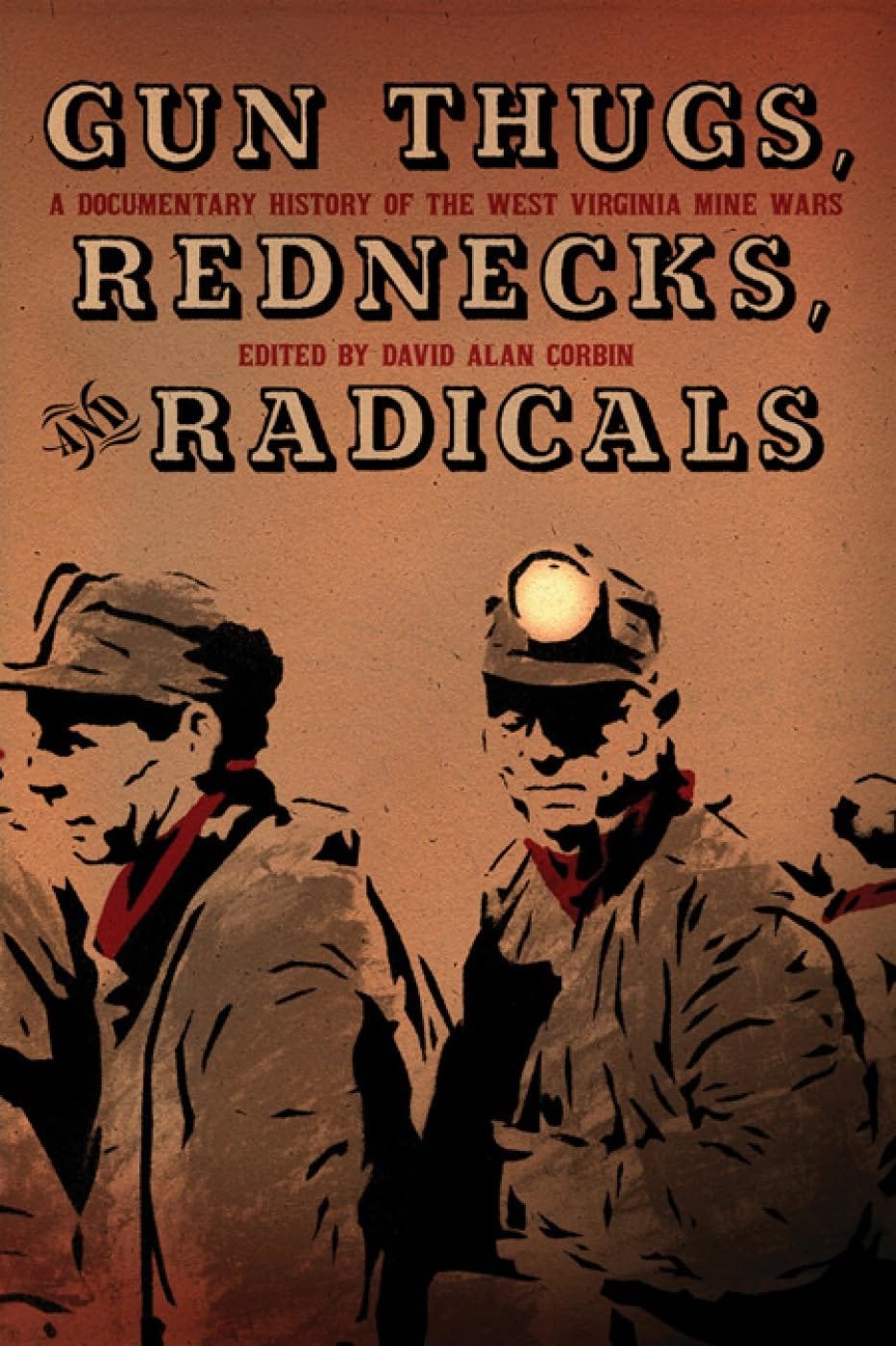
![Life, Work, and Rebellion in the Coal Fields: The Southern West Virginia Miners, 1880-1922 [Book] Life, Work, and Rebellion in the Coal Fields: The Southern West Virginia Miners, 1880-1922 [Book]](https://substackcdn.com/image/fetch/$s_!BqN5!,w_1456,c_limit,f_auto,q_auto:good,fl_progressive:steep/https%3A%2F%2Fsubstack-post-media.s3.amazonaws.com%2Fpublic%2Fimages%2Ffbf396b2-0dfd-4488-866f-96bfb8ec21e3_1400x2100.jpeg)
![55 Strong: Inside the West Virginia Teachers' Strike [Book] 55 Strong: Inside the West Virginia Teachers' Strike [Book]](https://substackcdn.com/image/fetch/$s_!mza2!,w_1456,c_limit,f_auto,q_auto:good,fl_progressive:steep/https%3A%2F%2Fsubstack-post-media.s3.amazonaws.com%2Fpublic%2Fimages%2Fdaadf616-1c2c-4378-97e8-639de464a9c2_1201x1500.jpeg)



